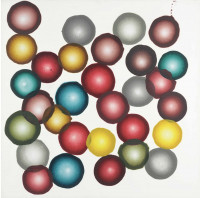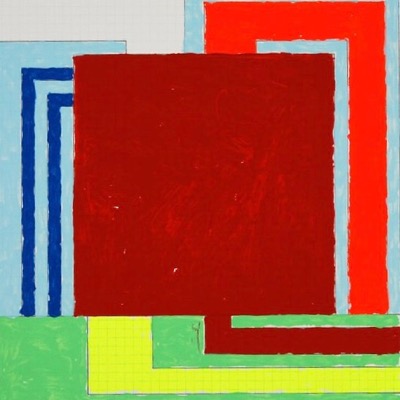
Details
Artist
Styles
This 17-color screenprint was created by the artist in 1997. Signed in pencil and numbered, from the edition of 75 measuring 42 X 32 in. (106.7 x 81.3 cm.) // Happiness For Instance I by Ross Bleckner, produced in 1997, is a 17-color screen print that captures a contemplative, almost meditative quality through abstract forms and muted colors. The composition features overlapping circular shapes in shades of lavender, black, grey, and hints of yellow, some of which appear translucent, creating a layered, floating effect. The forms resemble blurred orbs or cells, adding a sense of organic fluidity. Bleckner’s work often delves into themes of memory and the ephemeral nature of life, and this piece invites viewers to explore the delicate interplay between clarity and ambiguity. Signed and numbered by the artist, this print is part of a limited edition of 75 and measures 42 x 32 inches.
Happiness For Instance I, 1997
form
Medium
Size
106.7 x 81.3 cm
- Inches
- Centimeters
Edition
Price
Details
Artist
Styles
This 17-color screenprint was created by the artist in 1997. Signed in pencil and numbered, from the edition of 75 measuring 42 X 32 in. (106.7 x 81.3 cm.) // Happiness For Instance I by Ross Bleckner, produced in 1997, is a 17-color screen print that captures a contemplative, almost meditative quality through abstract forms and muted colors. The composition features overlapping circular shapes in shades of lavender, black, grey, and hints of yellow, some of which appear translucent, creating a layered, floating effect. The forms resemble blurred orbs or cells, adding a sense of organic fluidity. Bleckner’s work often delves into themes of memory and the ephemeral nature of life, and this piece invites viewers to explore the delicate interplay between clarity and ambiguity. Signed and numbered by the artist, this print is part of a limited edition of 75 and measures 42 x 32 inches.
- Recently Added
- Price (low-high )
- Price (high-low )
- Year (low-high )
- Year (high-low )
What is Neo-Geo?
Known as Neo-Geo for short, this movement uses geometric objects and shapes to create abstract artwork as a metaphor for society. Inspired by various 20th-century art styles, including minimalism and pop art, Neo-Geo emerged in the 1980s as a response to the industrialization and commercialization of the modern world. The movement reflects on the impact of mass production, consumerism, and technology, often critiquing the superficiality of contemporary culture through its abstract, geometric compositions.






















